Remember, in severe weather conditions, it’s far better to arrive at your destination late but safely, rather than not arriving there at all. If you are driving in a thunderstorm, the ideal approach is to seek shelter. However if you have no choice but to rough it out, thank God there are tips to drive safely in a thunderstorm.
Driving in less than ideal conditions can be more common than desired, so it’s best to be well informed and prepared. In dangerous situations, we usually follow our impulses and even some unproven myths, which can be deadly.
This article will clarify common myths and misconceptions and give you a comprehensive list of dos and don’ts so that you can stay safe in a lightning storm.
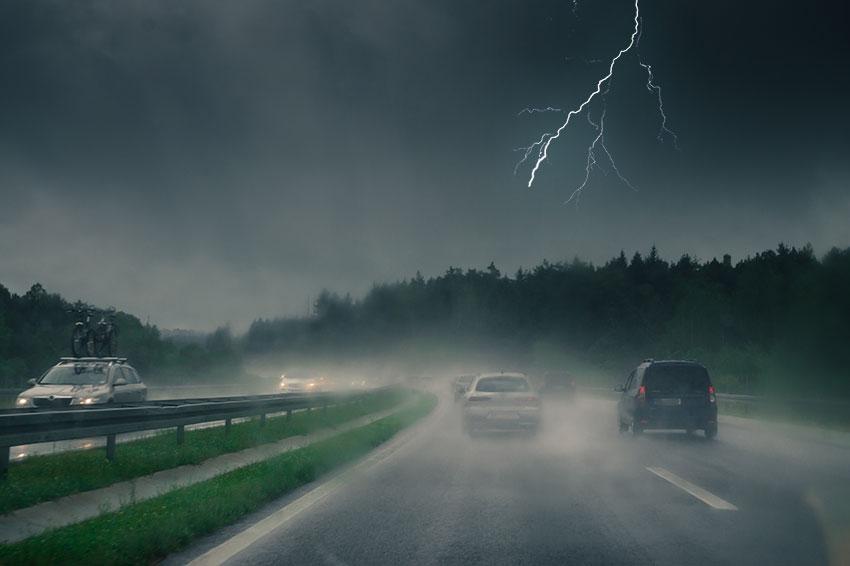
Contents
Why you should seek shelter and wait it out, if you can
A thunderstorm typical lasts for only about 30 minutes, so the ideal course of action is to seek shelter, or pull onto the side of the road and turn on your emergency brakes to wait it out. A thunderstorm might not sound as big of a problem as a tornado, but it entails a number of hazardous factors which together can make driving extremely difficult even for seasoned drivers.
There is also the risk of getting struck by lightning in your car. Will you get electrocuted and die instantly if that happens, or do the rubber tyres protect your car from getting struck at all? Read on to find out.
Is it safe driving in a Thunderstorm?
Do not underestimate the various dangers you might face from all directions while driving in a thunderstorm.
1. Heavy rain
Don’t expect to see much of what’s in front of and behind you while driving in a thunderstorm because of the pouring rain. Due to this low visibility, turn on your headlights so other drivers can see you and do not tailgate. Pay extra caution when passing and always allow a bigger room than normal between your car and the car ahead.
Wetness also means reduced traction, thus it’s more difficult controlling your vehicle and it will take longer to brake, so you need to take that into account to drive safely in a thunderstorm.
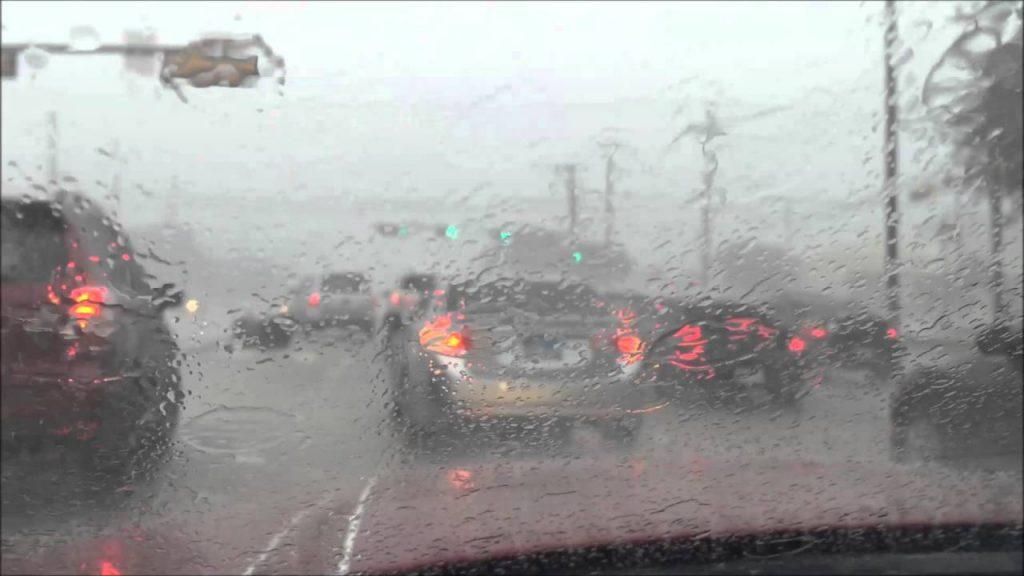
2. Puddles of water
Heavy rain comes with water puddles, which may seem harmless. However, even small bodies of water can cover a hidden pothole or damaged road. In serious storm, damaged power lines can fall into the water and if you drive into it, well …. If you can, find an alternative route when you see very large bodies of water ahead.
READ MORE
3. Strong wind
While driving in a thunderstorm, without a firm grip on the steering wheel, you can find yourself losing control of your vehicle or end up in the wrong lane due to strong wind.
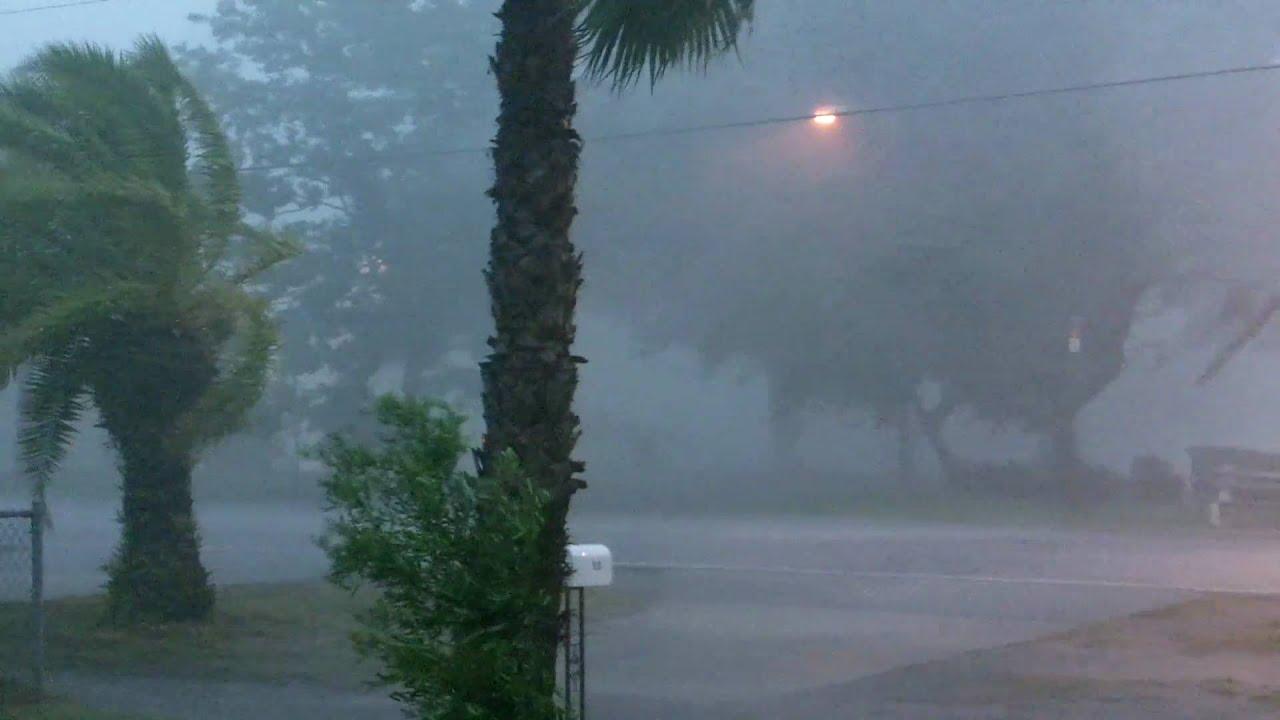
4. Flying debris
With the wind comes whatever it jerks up and carries around. Beware of tree branches, trash and anything really that can get thrown onto your vehicle and on your way.
5. Other drivers
For some this might be the most irritating and dangerous factor of driving in a storm. Nervous drivers, or even worse, impatient drivers trying to outrun the storm, may drive very fast, tailgate or pass without proper signaling. That’s why it is extremely important to allow a safe distance from your car to other vehicles while driving in a thunderstorm.
6. Lightning
Lightning can knock down power lines and start fires, so if you have to pull over to wait the storm out, keep away from tall trees or structures that can crash on your car or increase the likelihood of you getting struck by lightning. If a lightning strikes close to you, especially at night, it can cause temporary blindness, which adds on the already dangerous driving in heavy rain and strong wind.
And of course, what everybody is terrified of: the risk of being electrocuted in your vehicle if a lightning strikes it. Every year, around 330 people are struck by lightning in the US, of which 50 died, which means the majority survive.
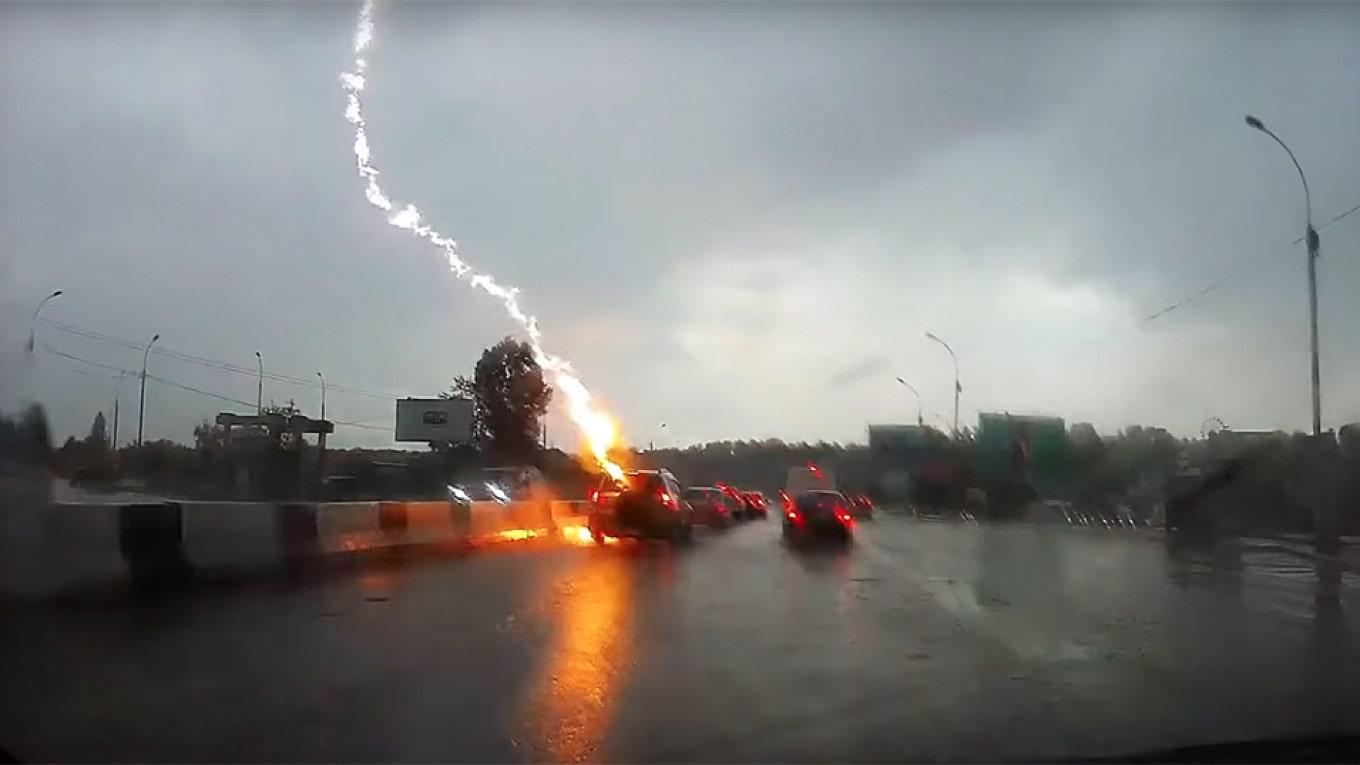
Will I get electrocuted in my car if it’s struck by lightning?
Apart from seeking shelter in a house, your car is actually the safest place to be in a thunderstorm, as long as it has closed windows and hard-top. This is because metal is a good conductor, so when a lightning strikes, the current will quickly flow through the outer metal frame of the car to the ground. Therefore vehicles with open and soft-top like convertibles and Jeeps will not give you the same protection as an enclosed metal vehicle.
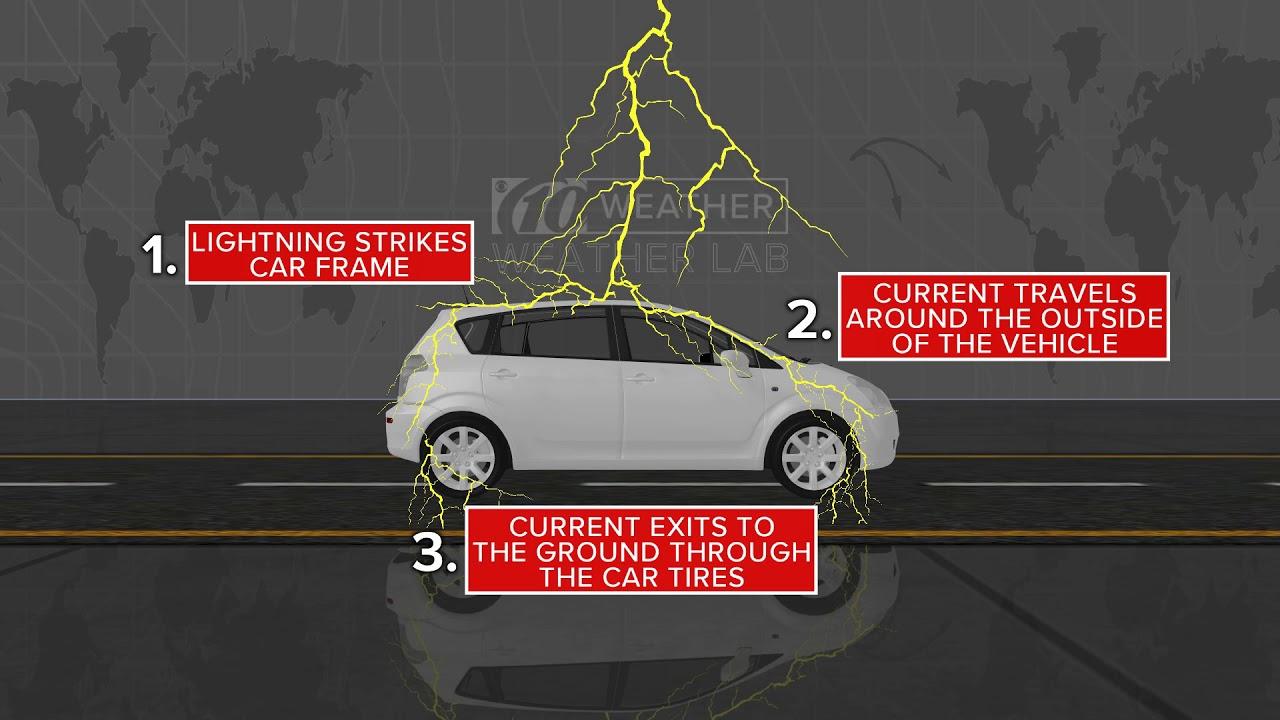
An important note is not to touch anything metal in your car, including car handles and the steering wheel since metal conducts electricity easily. Stay in your seat, do not lean against the car windows, keep your hands on your lap and wait until the storm is a safe distance away Also remember not to park your car underneath trees.
Other Tips for Safe Driving in a Thunderstorm
Below are some unexpectedly helpful driving tips for dealing with difficult weather that no every driver knows.
1. Tune into a radio weather station
Find a station that covers the area that you’re heading to to keep yourself informed of the latest development and what to look out for.
2. Keep cruise control off
You will have less control than normal on your car’s speed when using cruise control, thus if anything happens you may not be able to react quickly enough. Drive manually and stay alert.
3. Turn on headlights, windshield wipers and AC
In the US and Canada, you are required by law to turn your headlights on high beams in difficult weather conditions. To better deal with low visibility, turn on your AC or defroster to clear your car windows in case they are fogged by the rain.
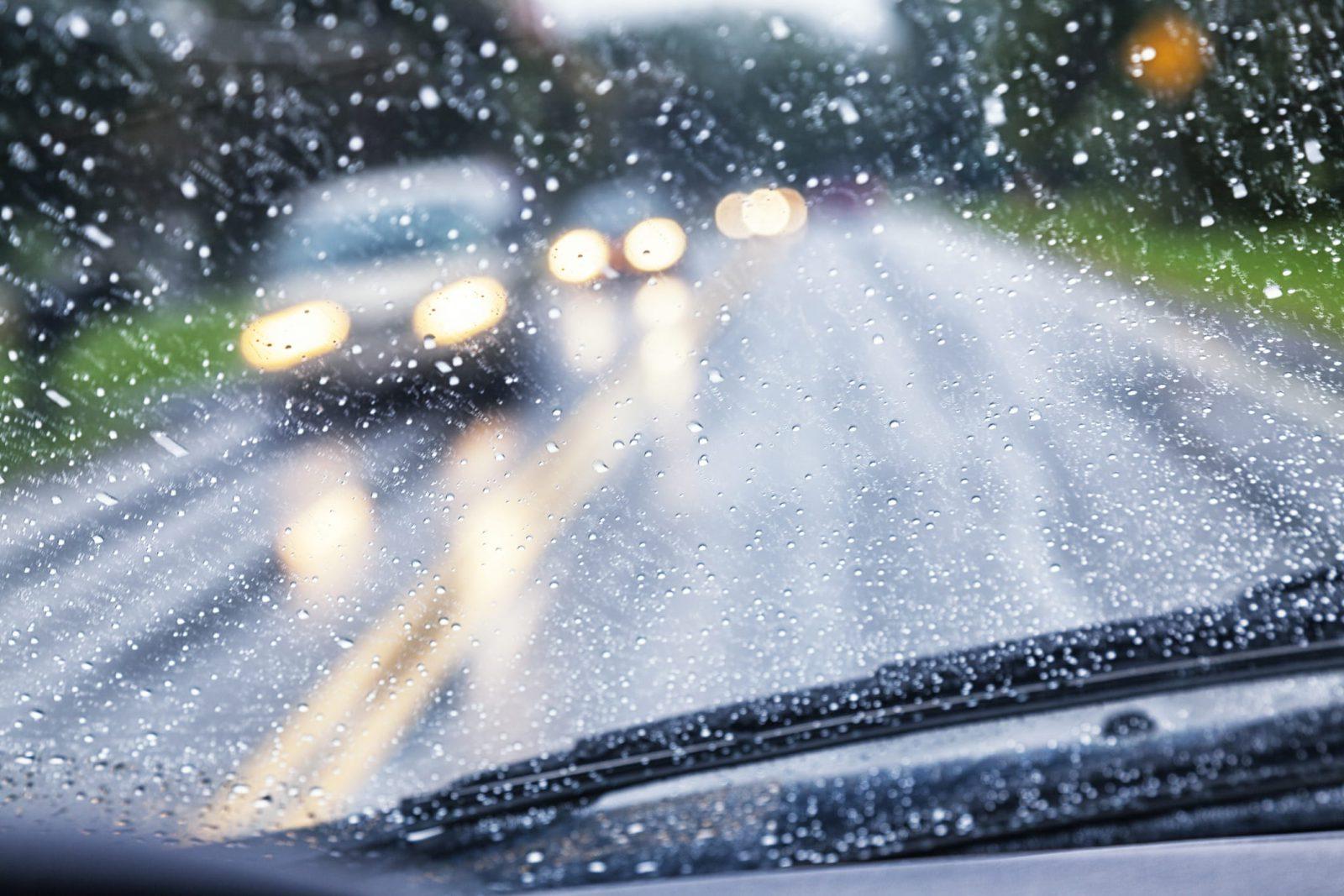
4. What to do when your car hydroplanes
If your car loses traction and skids due to wetness, resist the temptation to slam on the brakes. Slowly reduce speed and gently steer the car back to the proper direction. Steering too hard can result in your vehicle skidding out of control.
READ MORE
5. How to stay safe when it begins hailing
If you cannot find something to park your car under, turn your car toward the hails as the windshield is much stronger than the windows. Keep your back turn to the window and cover your head with whatever is available.
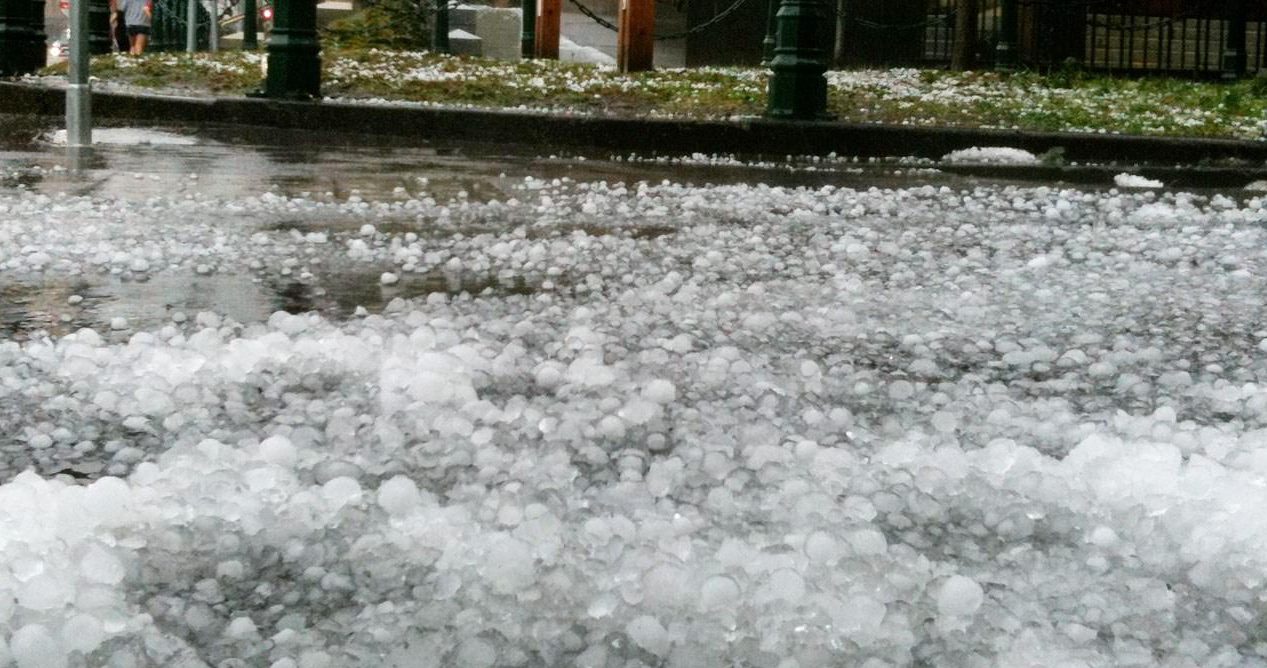
6. How to drive in the mud
It’s better to stop and inspect the muddy road to see if it is too soft because of the rain, because you might get stuck in it. If there is no alternative route, drive through it very slowly and avoid following another car’s track, as the track is deeper and you can get stuck.
Although not encouraged, you might find yourself having to drive in a thunderstorm, or generally drive in a heavy rain, quite often, depending on your local weather. It is absolutely vital to equip yourself with the necessary safety tips to prepare yourself with whatever difficult situation on the road.
Apart from the above essential tips for driving safely in a lightning storm, proper maintenance of your vehicle cannot be ignored, especially in less than ideal weather. While driving in harsh conditions, it benefits you to be cautious at all times rather than be just a little rash at times.


